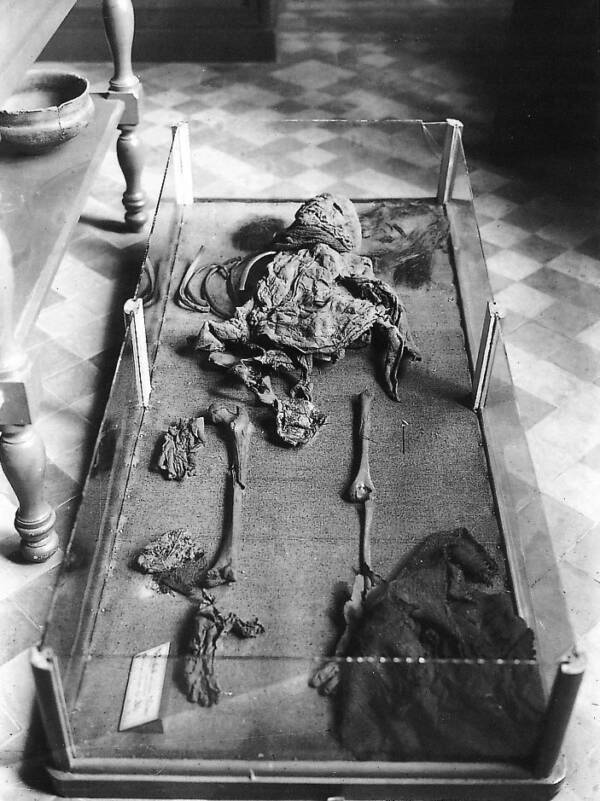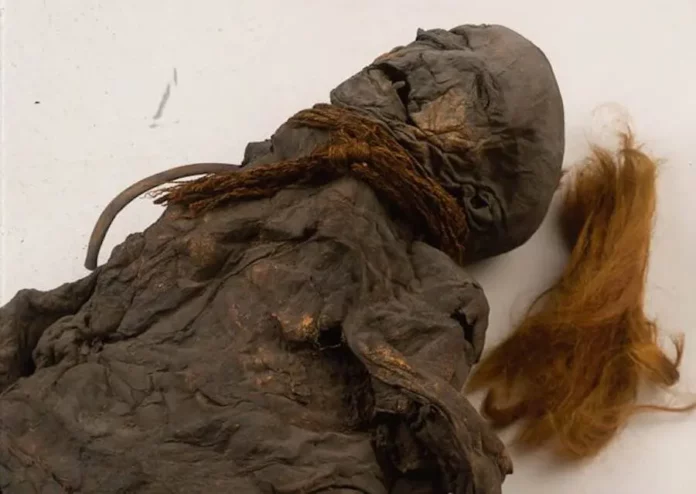In 1897, a 2,000-year-old mummy was discovered in a swamp near the village of Yde, Netherlands, sparking intrigue and speculation. Many believe that this young girl met a gruesome fate, either executed or sacrificed. The enigmatic circumstances surrounding her death have captivated researchers for over a century. This article delves into the captivating story of “Yde Girl” and the secrets she holds.
Unveiling the History of Yde Girl
On May 12, 1897, while dredging peat from the Stijfveen swamp, two laborers stumbled upon a distorted, darkened corpse with red hair. The presence of a noose around the neck and a puncture wound near the skull suggested a violent demise. Initially shrouded in mystery, the identity of this individual remained unknown until decades later.

When the authorities in Yde and the Drents Museum received the body on May 21, 1897, it remained an enigma. The ligature mark on the neck and the disjointed limbs hinted at a brutal murder. Additionally, half of the girl’s hair had been cut, and her teeth were missing.
Determining her age proved challenging until the advent of radiocarbon dating in the 1940s. In 1992, Professor Richard Neave of the University of Manchester conducted a CT scan, unveiling that she was a 16-year-old girl without wisdom teeth. The examination also revealed her spinal deformity and abnormal foot swelling, causing a limp.
Decoding Yde Girl’s Time and Cause of Death
Radiocarbon dating placed Yde Girl’s demise in the early Common Era, between 54 BCE and 128 CE. The tannic acid present in the swamp had remarkably preserved her remains for over two millennia. In 1994, experts reconstructed her mummified body, thrusting “Yde Girl” into the global spotlight.

The exact circumstances of her demise remain uncertain, but Dr. Roy van Beek of Wageningen University proposed two hypotheses. The first suggests that the bodies found in the swamp could be those of lawbreakers or individuals convicted of crimes. The second, more widely accepted theory, suggests a ritualistic sacrifice to a higher authority. How did Yde Girl meet her tragic end?
Delving into Yde Girl’s Private Tragedy
In 2019, using landscape and terrain research as a foundation, Dr. Van Beek and his colleagues postulated that Yde Girl’s death could be attributed to personal issues. Dr. Van Beek stated that “the girl may have come from a settlement near the Yde Mountain slope. However, her body was left in a small, relatively shallow swamp about one kilometer away.” Officials from the Drents Museum claimed that her hair had been cut by villagers in the 19th century. Moreover, the act of cutting women’s hair as punishment for adultery was prevalent in medieval times.

However, no additional evidence supports the notion of a husband or a societal basis for her disability or deformity. It is believed by some that the young girl was an ideal candidate for child sacrifice, with hopes of ensuring agricultural prosperity during that era.
The death of “Yde Girl” remains a haunting mystery to this day. Preserved and safeguarded at the Drents Museum in Assen, Netherlands, her mummified remains continue to intrigue researchers and visitors alike. Through advanced scientific techniques, her story has gradually unfolded, shedding light on the ancient practices and enigmatic circumstances that surrounded her tragic end. The legacy of “Yde Girl” serves as a reminder of the lingering secrets and untold tales from our distant past.

